Canfranc village
Canfranc is the name of a municipality in the Aragon Valley, in the very north of Spain just a couple kilometers from the French border. The name of the province comes from the name of the village Canfranc.
And the name of the village comes from Campus Franci meaning field of foreigners. In the early days it was functioning as a market place and it was always a waypoint for travelers and traders from across and traveling through the region. Most of them ‘foreigners’, thus the name. To this day it remains the first resting place after the difficult crossing of the Pyrenees for all the pilgrims that undertake the legendary Way of St. James (Camino de Santiago).
Railway station
The international station of Canfranc finds its origin in the will to unite France and Spain. They had the issue of the Pyrenees – you can’t go over it so they decided to go through it by the way of a railroad tunnel. Both countries started with signing the agreements, the first one was signed in 1904 and as soon as the ink was dry, the construction started. However due to the First World War there were a lot of delays in the building of the tunnel, men and resources were much needed else where.
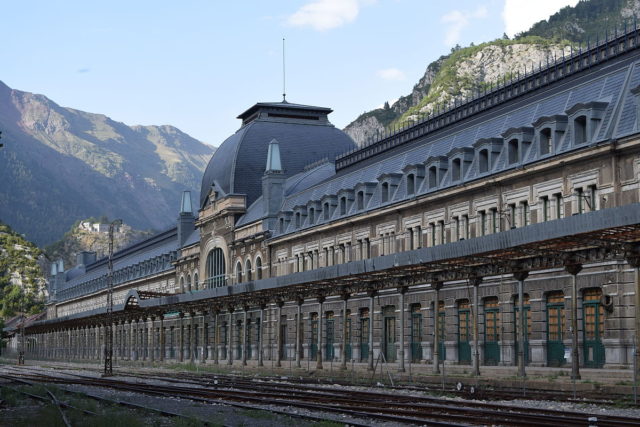
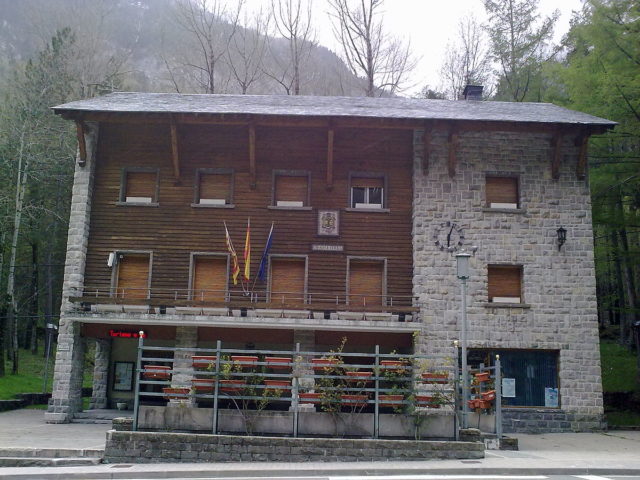
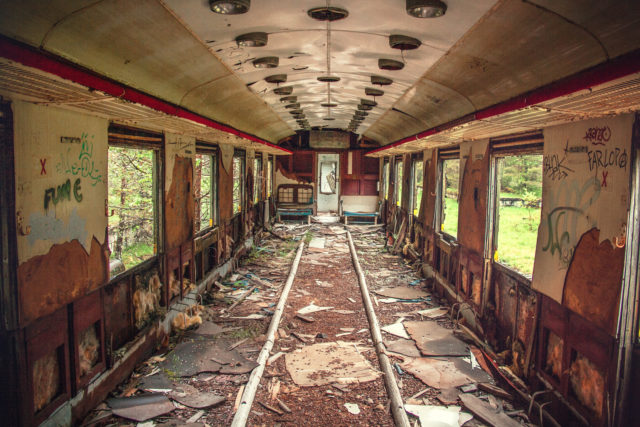
The tunnel was eventually completed in 1915 and the building of the station started in 1923 and opened on 18 July 1928. On the opening day the red ribbon was cut by none other than King Alfonso XIII of Spain and the president of the French Republic Gaston Doumergue.
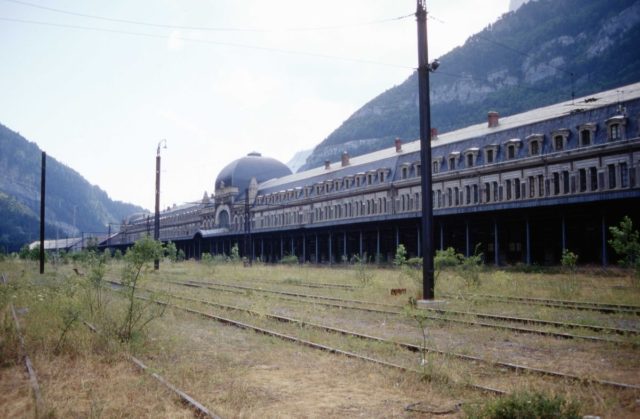
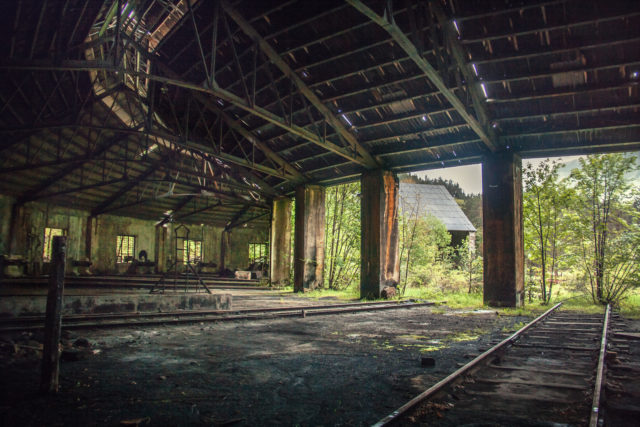
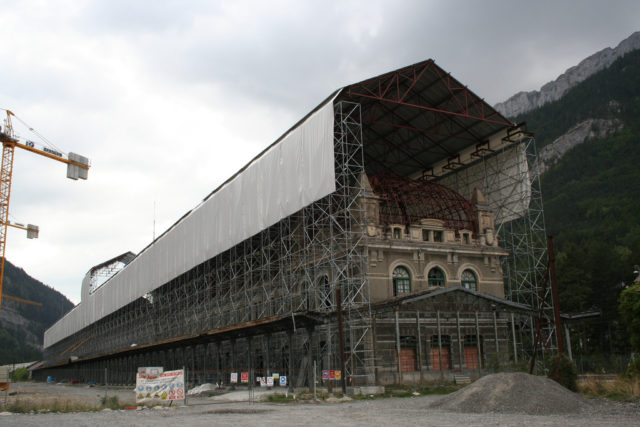
War period
During war periods the Canfranc railway was always an important tactical point. In the Spanish Civil war it was controlled by the general Francisco Franco army. They blocked the tunnel defensively, to avoid any type of penetration from the north. Between the period of the Second World War the railroad was closed off for civilians. And it was only used for transport of metal that Germans used in production of their tanks. In return trains full of gold bullion coming from Switzerland into Spain.
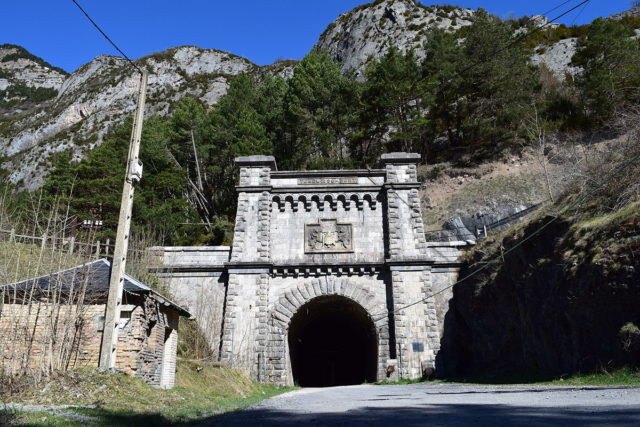
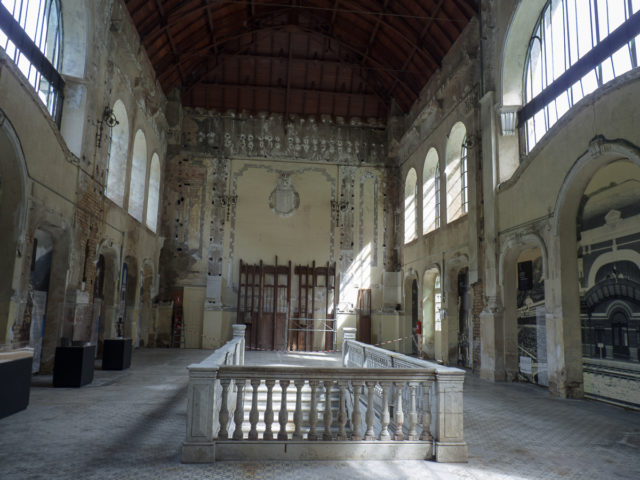
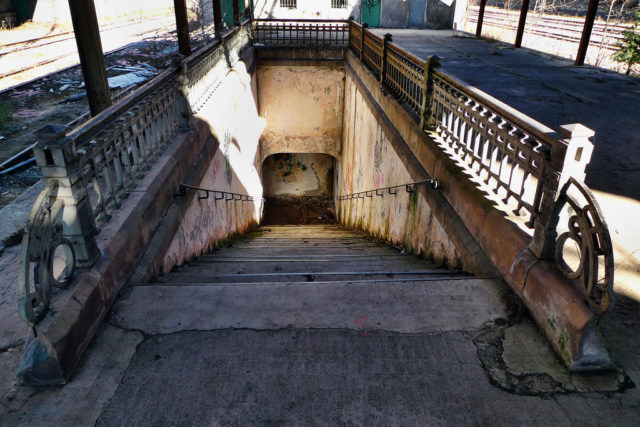
Plans for rehabilitation
The station has been abandoned since 1970 after the bridge L’Estanguet collapsed and made train traffic impossible. It’s overgrown and empty, abandoned most of the time except for organized tourist walks in July and August. Every year on 18th of July the anniversary of the station is celebrated. There were plans to convert the Canfranc station to a luxury hotel and first two phases have been carried out between 2006 and 2009. But phase III never started due to funding problems, and the plan was abandoned.
